I am using OpenGL ES version 3 for my android game and have implemented instancing. It works well IF I use a polygon of the same size/dimension that is identical vertices. I can jump to different UV-coordinates of the texture atlas if I want to create change the sprites state for every frame.
v_TexCoordinate = a_TexCoordinate + uvCoordsOffset[gl_InstanceID];
that is .. I just change the texture coordinates with a uniform-vec which consists of offset coordinates.
BUT - here comes the issue.
What if I want to do the same but with sprites that have different dimensions?
in the drawcall ...
GLES30.glDrawElementsInstanced(GLES30.GL_TRIANGLES, 6, GLES20.GL_UNSIGNED_SHORT, indexOffset, nFallingObj);
I can only send one polygon, that is the green dinosaur vertices in the screenshot. I have this as base polygon and I want to get to the RED dinosaur of the atlas. I can do this easily with texture offset as described above BUT you see how it becomes? the polygon of the green dinosaur is used but I want to be changed as of the red dinosaurs.
Is there any easy solution to this issue? thanks in advance!!!
some source-code
the draw-method
public void drawFallingObjects() {
GLES30.glUseProgram(mProgramHandle);
GLES30.glEnableVertexAttribArray(mPositionHandle);
GLES30.glVertexAttribPointer(mPositionHandle, CreateGLContext.POSITION_DATA_SIZE, GLES20.GL_FLOAT, false, CreateGLContext.STRIDE, 0);
GLES30.glEnableVertexAttribArray(mTextureCoordinateHandle);
GLES30.glVertexAttribPointer(mTextureCoordinateHandle, CreateGLContext.TEXTURE_COORDINATE_DATA_SIZE, GLES20.GL_FLOAT, false,
CreateGLContext.STRIDE, CreateGLContext.POSITION_DATA_SIZE * CreateGLContext.BYTES_PER_FLOAT);
GLES30.glUniform2fv(uvCoordsOffsetLoc, nFallingObj, uvOffsetVec, 0);
GLES30.glUniformMatrix4fv(mMVPMatrixHandle, nFallingObj, false, mMVPMatrixMajor, 0);
GLES30.glDrawElementsInstanced(GLES30.GL_TRIANGLES, 6, GLES20.GL_UNSIGNED_SHORT, indexOffset, nFallingObj);
}
vertex-shader code
void main()
{
v_Color = a_Color;
v_TexCoordinate = a_TexCoordinate + uvCoordsOffset[gl_InstanceID];
gl_Position = u_MVPMatrix[gl_InstanceID] * a_Position;
}
